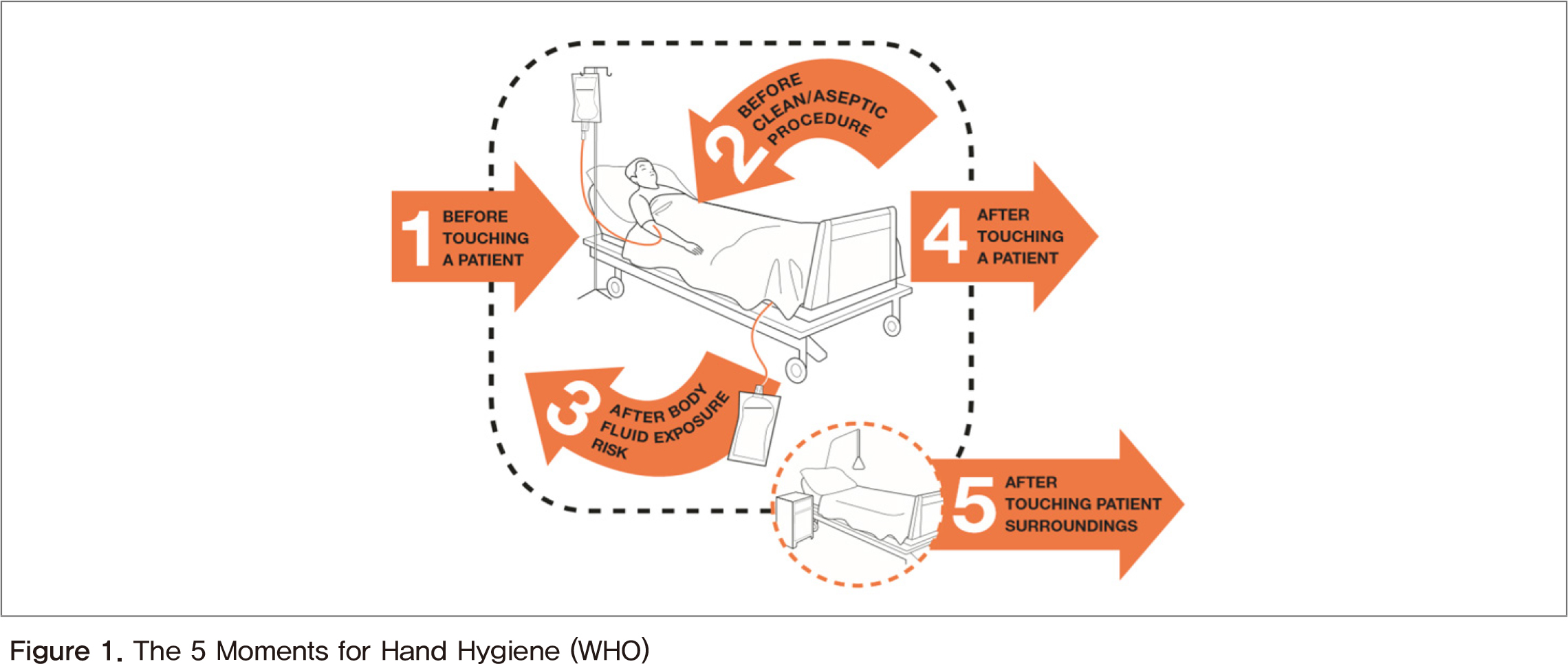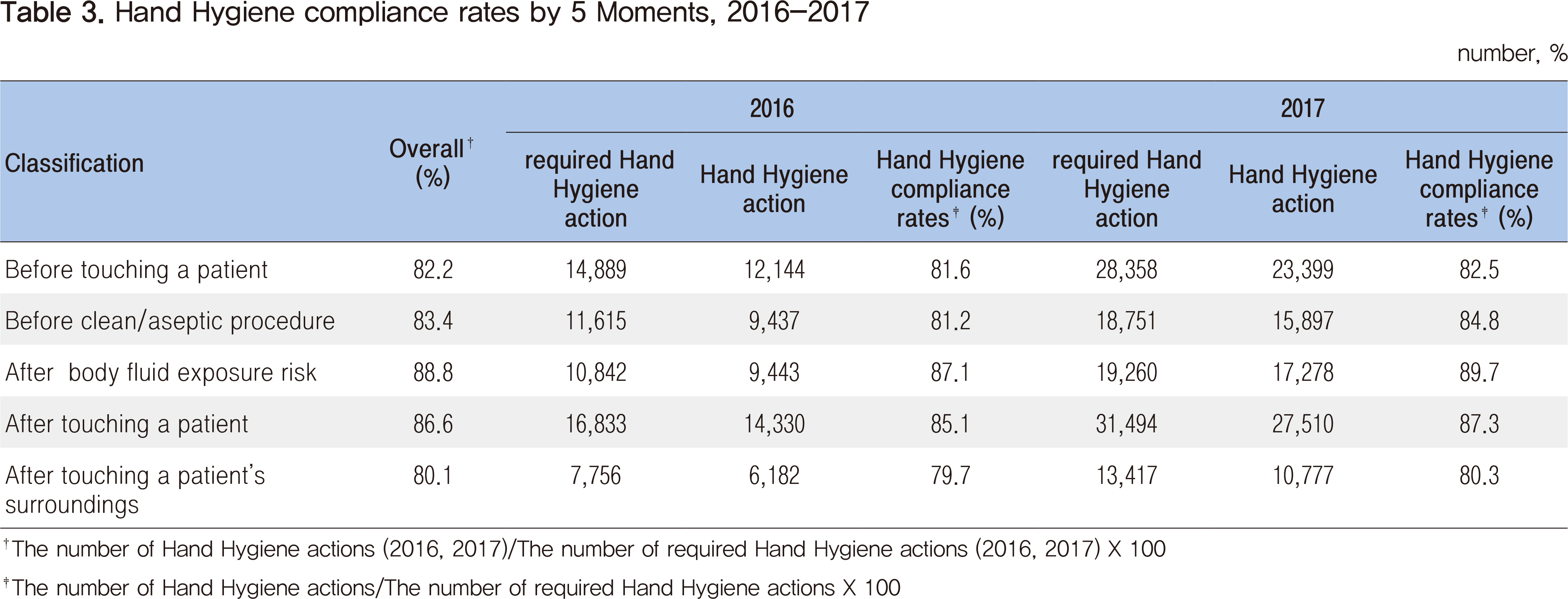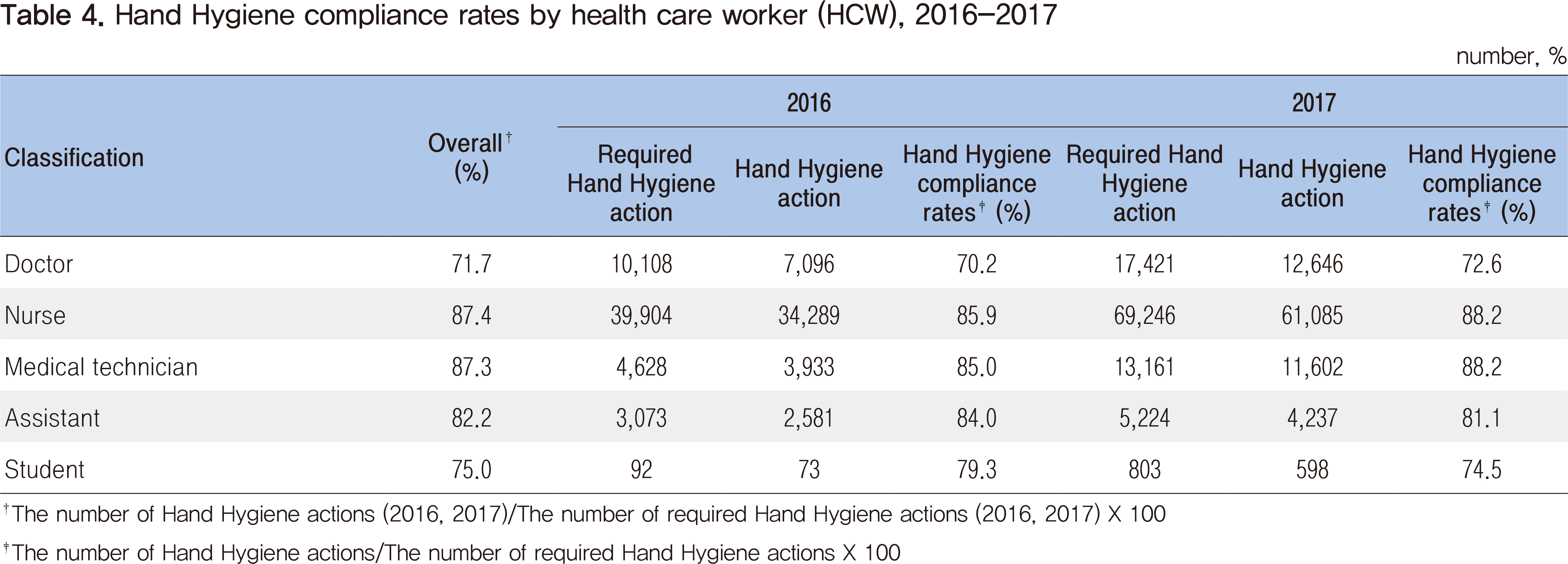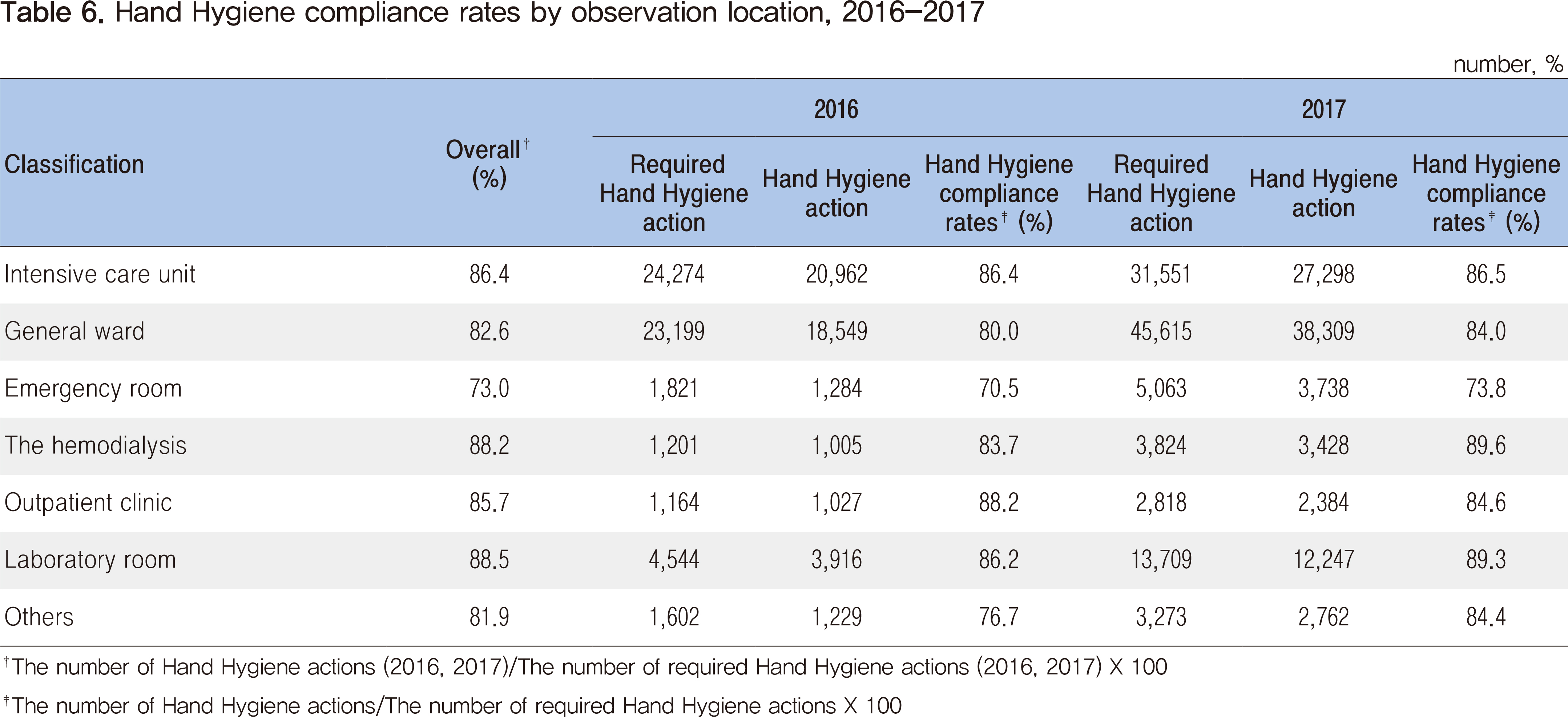contents area
Public Health Weekly Report
detail content area
- Date2019-10-17 20:58
- Update2019-11-19 18:11
- DivisionDivision of Healthcare Associated Infection Control
- Tel043-719-7580
Results of the Korean National Healthcare-Associated Infections Surveillance System (KONIS) -Hand Hygiene Surveillance-
Lee eun ju, Kim Sung nam, Bahk Hyun Jung, Lee Hyung Min
Division of Healthcare Associated Infection Control, Center for Infectious Disease Surveillance & Response, KCDC
Hand hygiene is one of the most effective and important methods to prevent healthcare-associated infections. The Korea Centers for Disease Control and Prevention (KCDC) conducted research to build a hand hygiene monitoring system to understand the extent of hand hygiene practices at hospitals in the Republic of Korea (ROK). Medical institutions with infection control nurses participated, and hand hygiene compliance monitoring data was collected through a hand hygiene monitoring module developed in conjunction with the Korean National Healthcare-Associated Infections Surveillance System (KONIS).
The total hand hygiene compliance rate from 2016 to 2017 was 84.4%, 83.0% in 2016 and 85.2% in 2017; reflecting an increase in the hand hygiene compliance rate from the previous year (2016) by 2.7%. The compliance rate by action based on the ‘5 Moments for Hand Hygiene’ recommended by the World Health Organization (WHO) was the highest rate of compliance of hand hygiene after the risk of body fluid exposure (88.8%) and the lowest rate of hand hygiene after contact with the patient's surrounding environment (80.1%). The rate of hand hygiene practice by type of occupation for health care workers was highest for nurses (87.4%) and lowest for doctors (71.7%). The higher the number of beds, the higher the hand hygiene implementation rate (79.6% below 699 beds, 86.0% 700-899 beds, 88.7% above 900 beds). Hand hygiene practices by observation location were lowest in the emergency room (73.0%) and highest in the laboratory (88.5%). In the future, the foundation will be expanded to apply the results indicators such as the expansion of the surveillance system including the clinic level and health care-associated infection rates. In addition to sharing activities for promoting hand hygiene and training for practitioners to maintain a reliable monitoring system, quality improvement activities are also being conducted. KCDC will actively promote preemptive preventative activities.
Keywords: hand hygiene, hand hygiene compliance rates, KONIS, healthcare-associated Infection







 This public work may be used under the terms of the public interest source + commercial use prohibition + nonrepudiation conditions
This public work may be used under the terms of the public interest source + commercial use prohibition + nonrepudiation conditions